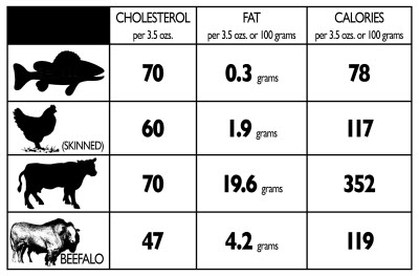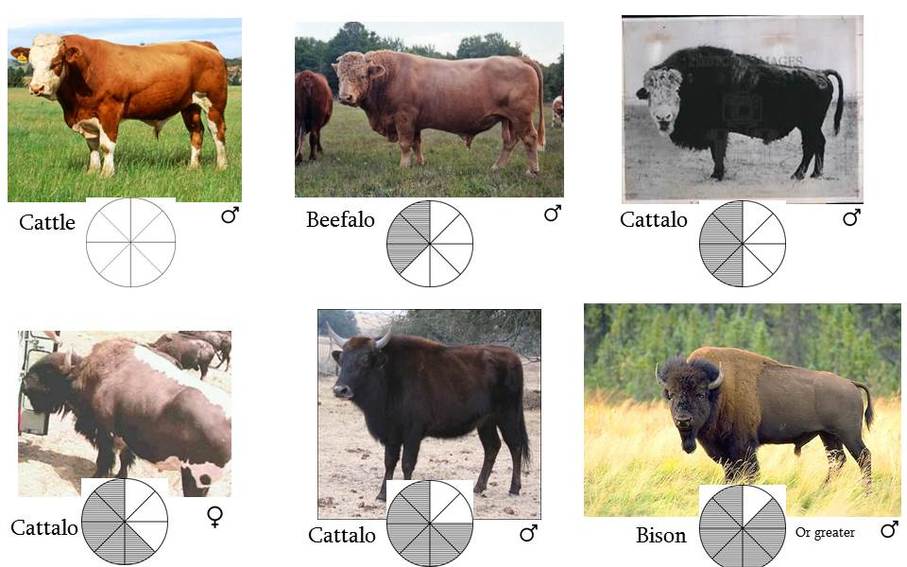|
We have a new Facebook Page. Please look for it and send your friend request. it is Northeast Beefalo. Send in pics, any new info like new cavles or aniamls for sale.
|
|
What's a Beefalo
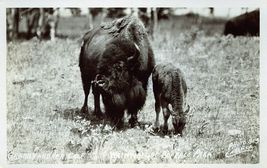
A Beefalo is a hybrid cattle cross between a bison and any breed of cattle. This inbreeding can be traced back as far as 1749, but the mix-matched offspring at that time where unpredictable and commonly unfertile, so it was quickly abandoned.
After the 1886 blizzard in Kansas, cattlemen attempted the hybrid cross breeding once more. It was hoped that the bison genetics would give the cattle the advantage they would need to survive the dramatic climate changes.
After the 1886 blizzard in Kansas, cattlemen attempted the hybrid cross breeding once more. It was hoped that the bison genetics would give the cattle the advantage they would need to survive the dramatic climate changes.
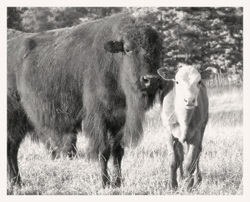
In 1965 Jim Burnett of Montana finally did it, a fertile male calf was born. Shortly after the World Buffalo Association introduced the new breed as "Beefalo". Jim Burnett got more then what he hoped for; not only did the new hybrid beef cattle have the advantage they needed to adapt to severe climate swings, they had less issues calving and the beefalo proved to be more efficient grazers - converting everything they ate into usable muscle development, which increased growth rates. Later down the road the USDA would also discover that Beefalo possess bisons lean meat qualities, low cholesterol characteristics, as well as an increase in protein, calcium, and iron. This discovery lead to recognition from the USDA for "Beefalo" to be considered it's own brand of beef.
Such recognition prompted the USDA to require slaughter houses to clean all butchering equipment and process Beefalo before any other beef, to insure that Beefalo beef meat is not contaminated by regular beef. This strict guideline enables Beefalo farmers to legally label their meat as "Beefalo beef", which would otherwise be impossible to do. In the charts below you can see the nutrition comparisons of Beefalo vs beef and other meats that we commonly consume.
Such recognition prompted the USDA to require slaughter houses to clean all butchering equipment and process Beefalo before any other beef, to insure that Beefalo beef meat is not contaminated by regular beef. This strict guideline enables Beefalo farmers to legally label their meat as "Beefalo beef", which would otherwise be impossible to do. In the charts below you can see the nutrition comparisons of Beefalo vs beef and other meats that we commonly consume.
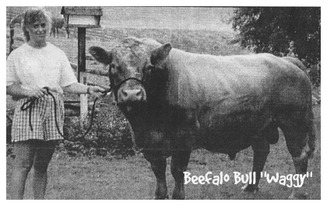
Today Beefalo farmers can register their Beefalo with the American Beefalo Association, as either "Full-blooded" or "Pure Blooded". The difference is the exact percentage of bison. To be considered "Full-blooded" it takes a bit of careful calculating... your cattle must be exactly 3/8 bison paired with 5/8 cattle of your choice.
Anything less then 3/8 bison but containing no less then 17% bison is registered as a "Pure Blood" Beefalo. Anything 1/2-3/4 bison is considered a hybrid Cattalo. As you can see by the chart below.
As a result of the 1985 approval for public sale of Beefalo by the USDA to be sold under the stamp “Beefalo Beef”. Producers can market their product as lower in fat and cholesterol-and consumers can be confident in their Beefalo purchase.
With this priviledge also comes a level of accountability, the American Beefalo Association maintains the official registry for “Beefalo Beef” as allowed by the USDA’s exclusive marketing program. All animals in the Beefalo Meat Registry must be at least one-half (1/2) Beefalo (17% bison) and not more than full-blood Beefalo (37.5% bison). In accordance with the USDA guidelines, all animals being sold as Beefalo must be registered in the ABA Meat Registry.
Anything less then 3/8 bison but containing no less then 17% bison is registered as a "Pure Blood" Beefalo. Anything 1/2-3/4 bison is considered a hybrid Cattalo. As you can see by the chart below.
As a result of the 1985 approval for public sale of Beefalo by the USDA to be sold under the stamp “Beefalo Beef”. Producers can market their product as lower in fat and cholesterol-and consumers can be confident in their Beefalo purchase.
With this priviledge also comes a level of accountability, the American Beefalo Association maintains the official registry for “Beefalo Beef” as allowed by the USDA’s exclusive marketing program. All animals in the Beefalo Meat Registry must be at least one-half (1/2) Beefalo (17% bison) and not more than full-blood Beefalo (37.5% bison). In accordance with the USDA guidelines, all animals being sold as Beefalo must be registered in the ABA Meat Registry.
